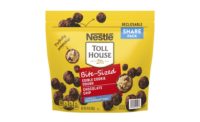P&G wants to put consumers on a ‘greener’ path

Procter & Gamble Co., Cincinnati, says it wants to develop and sell products that people love but that don't harm the environment. Will consumers be willing in this economy to pay an upcharge for green products or be willing to sacrifice any product performance, if necessary? No doubt, these questions would give any company a challenge.
As the song says, “It’s not easy being green.” Marketing experts say that companies dealing in environmentally friendly products can’t expect most consumers to buy their products simply because they might help save the earth. To convince people to hand over hard-earned cash right now for a funny-shaped bottle or unusual-looking light bulb, the products need to appeal in other ways.
“It’s a very small niche market that’s interested in buying green,” says Edwin Stafford, associate professor of marketing at Utah State University in Logan, Utah. “Most consumers buy on consumer benefit.” Thus, eco-friendliness may make consumers feel good, as long as it comes with attributes, such as superior performance, cost effectiveness or health benefits, says Stafford, who has extensively researched the topic.
P&G's chief executive, Robert A. McDonald, says his firm wants people to wash their clothes in cold water, among other environmental suggestions. He says P&G should improve the lives of the world's consumers. “We do that through our products. We do that through our operations. We do that through our philanthropy,” he says.
McDonald says he has goals for 2020 that include, for example, of 25% renewable energy. He says consumers should have a goal to wash 70% of their washloads in cold water. “Right now, 40% of washloads are done in cold water. If we could simply get every washing machine in the United States to do cold-water washing, we would provide the energy for 4.4 million households in this country and deliver 3% to 4% of the cuts in the Kyoto Protocol [an international agreement that sets targets for reducing greenhouse-gas emissions],” he says.
In the past 20 years, he says the company has reduced solid waste of baby diapers by 40% in the U.S. and 50% in Europe. Its research suggests that about 15% of consumers are looking for a sustainable product and are willing to take trade-offs in that product.
Many companies that sell eco-friendly products often have to do even more to convince consumers of its worth, especially if the product requires a little more investment than its conventional counterpart. Convincing consumers that eco-friendly products work as well as better-known brands isn’t easy either. It helps to tout benefits, such as health and wellness. It didn’t take long before the same consumers who were painstakingly picking out organic apples also began to realize they were cutting that piece of fruit on a countertop that had just been wiped down with a conventional cleaner that might contain toxins.
When Whirlpool Corp. is marketing products such as its Duet line of front-loading washing machines, the company isn’t shy about promoting the potential energy and water savings the products offer. Still, J.B. Hoyt, the company’s director of government relations, says that customers may interpret that message quite differently. “Some people will read that as, ‘Gee, I’m doing a good thing for the environment. Other people will read that as, 'Gee, I’ll save (myself) money,'” Hoyt says.
The Duet line does generally cost more up front than less-efficient washing machines, although the company says consumers can make up for that with energy savings.
Walmart Stores Inc., which launched a major environmental initiative aimed at cutting its costs and its environmental impacts, is running a series of ads focusing on eco-friendly consumer offerings such as compact fluorescent light bulbs and organic clothing. But the massive retailer also is seeking to reassure customers that it hasn’t lost sight of its major allure: Cheap prices.
Sources: www.online.wsj.com, www.msnbc.com
Looking for a reprint of this article?
From high-res PDFs to custom plaques, order your copy today!





